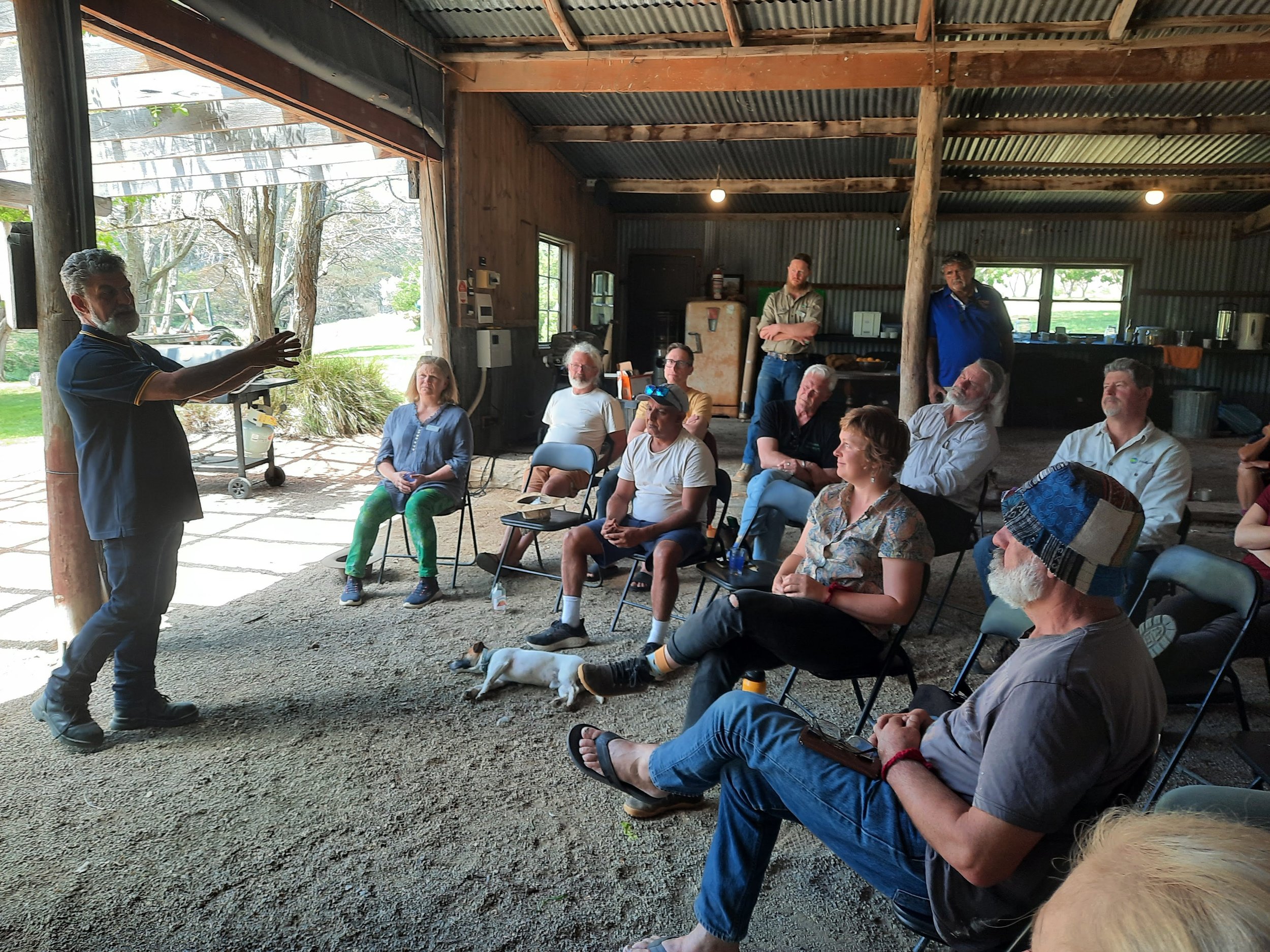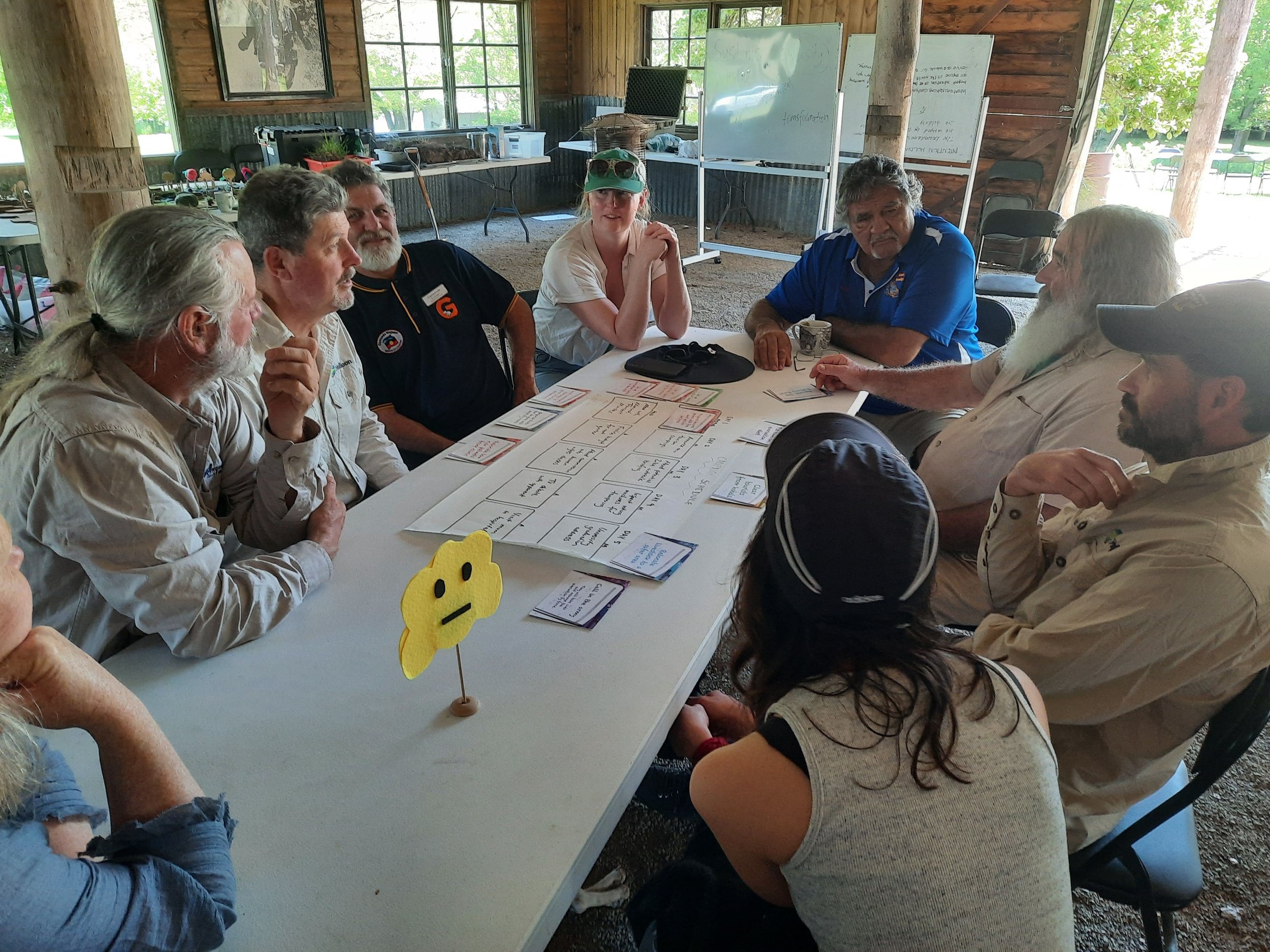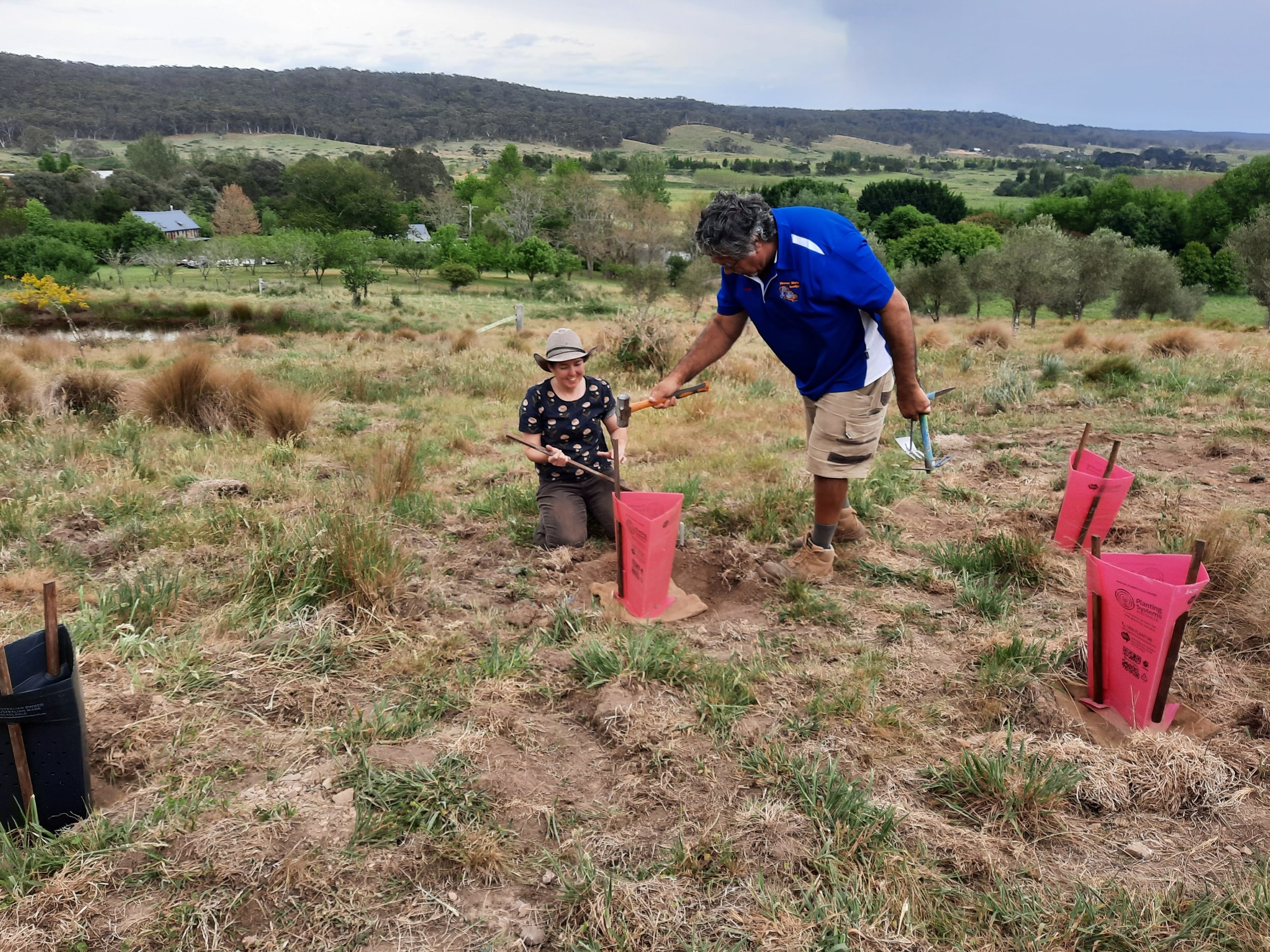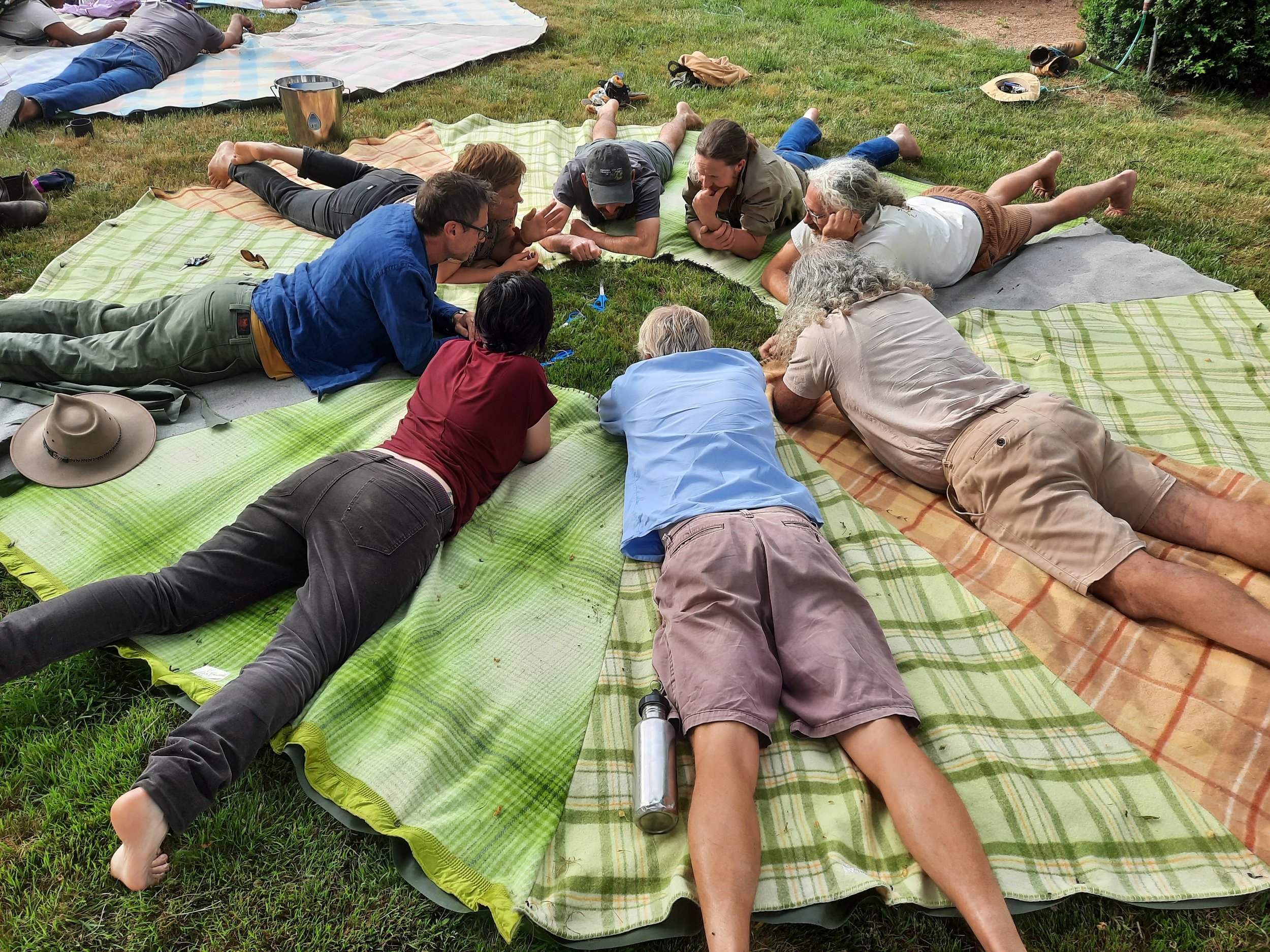The group, led by Mulloon’s Dr Laura Fisher (at left) preparing to install dyed silk flags to tune into the invisible flows of water, energy and nutrients in the landscape.
For many years, Mulloon Institute founder Tony Coote and late Yuin elder Uncle Max Dulumunmun Harrison exchanged ideas on the urgent need for culturally attuned water management on farmland. These conversations underpinned the establishment of the Mulloon Institute. This crucial relationship provides a model to explore the relationships among people, Country and community.
On 6-7 November, Mulloon Creek was the venue for an important gathering that affirmed that relationship: the Country-centred and Creative Residency. This event marked the launch of an exciting new initiative—the First Nations Water Stewardship Skills Certificate—made possible through a Climate-Smart Agriculture Program from the National Heritage Trust.
This 3-year project will see Mulloon Institute and Wiradjuri, Yuin and Gumbaynggirr custodians co-design an on-Country curriculum dedicated to water stewardship. We are thrilled to be working with North East Wiradjuri Company, Uncle Peter Swain, Darrunda Wajaar Rangers and Back to Country on this project. The shared vision is an accredited skills pathway and new economic opportunities that enable First Nations groups to lead land restoration projects in agricultural landscapes around Australia.
Members of each group joined the residency to explore how we could put Country-centred approaches at the heart of our work: Emma Syme, Ciaron Dunn, Darren Skinner, Uncle Peter Swain, Greg Smart and Uncle Macca (Anthony McNight). Our gathering shone even more brightly with Clint Hansen of Maaman Marra Boodjar, and Alan Beattie and Peter Twigg of Noongar Land Enterprises joining us from Western Australia. They are collaborators on another exciting new co-design project kicking off with a Climate-Smart Agriculture grant, LiFT: a toolkit for building Landscape Function & Resilience.
The residency began early with a Grandfather Sun ceremony led by Back to Country. We moved through yarning circles and creative activities led by David Hardwick and two creative collectives, Kandos School of Cultural Adaptation and Boho Interactive, who will help design curriculum tools that favour oral and visual communication. Ciaron showed us that the water molecule was a spinning boomerang, and Peter and Emma shared poetry and song. Clint helped us recognise ‘nature’s own contouring’, we planted 40 trees and cooled our feet in Mulloon Creek. Ideas were exchanged thoughtfully and generously, attuning us to Country and the gift of living knowledge.
On the second day something special happened: a shared vision of a Country-first approach to land regeneration emerged, and the group decided to form an open alliance on current and future projects on which this group works together underpinned by the development of a Memorandum of Understanding and the following statement:
We are an interwoven team working together, and with land managers, to heal Country. We will use a Country-first approach, resulting in First Nations people leading and actively participating in landscape restoration and renewal.
We will weave together knowledges and foster holistic ways of working to create more resilient landscapes for people and all living things. This is Country.
Mulloon is honoured to be working with these wonderful organisations. We can’t wait to play our part in facilitating new partnerships and pathways, particularly in farming contexts, that empower First Nations people to be on Country, and lead projects to restore and regenerate Country.
Standing at back: Peter Hazell, Peter Twigg, Ang Collins, Nathan Harris, Julia Johnson, Max Brunswick, Lucas Ihlein, Jono Forrest, Clint Hansen, Greg Smart, Nolani McColl, Alan Beatie, Peter Swain
Kneeling in front: Jack Smart, Tam Connor, Carolyn Hall, Laura Fisher, Lance Mudgway, Anthony McKnight.
This project is supported by the Australian Government through funding from the Natural Heritage Trust under the Climate-Smart Agriculture Program.







